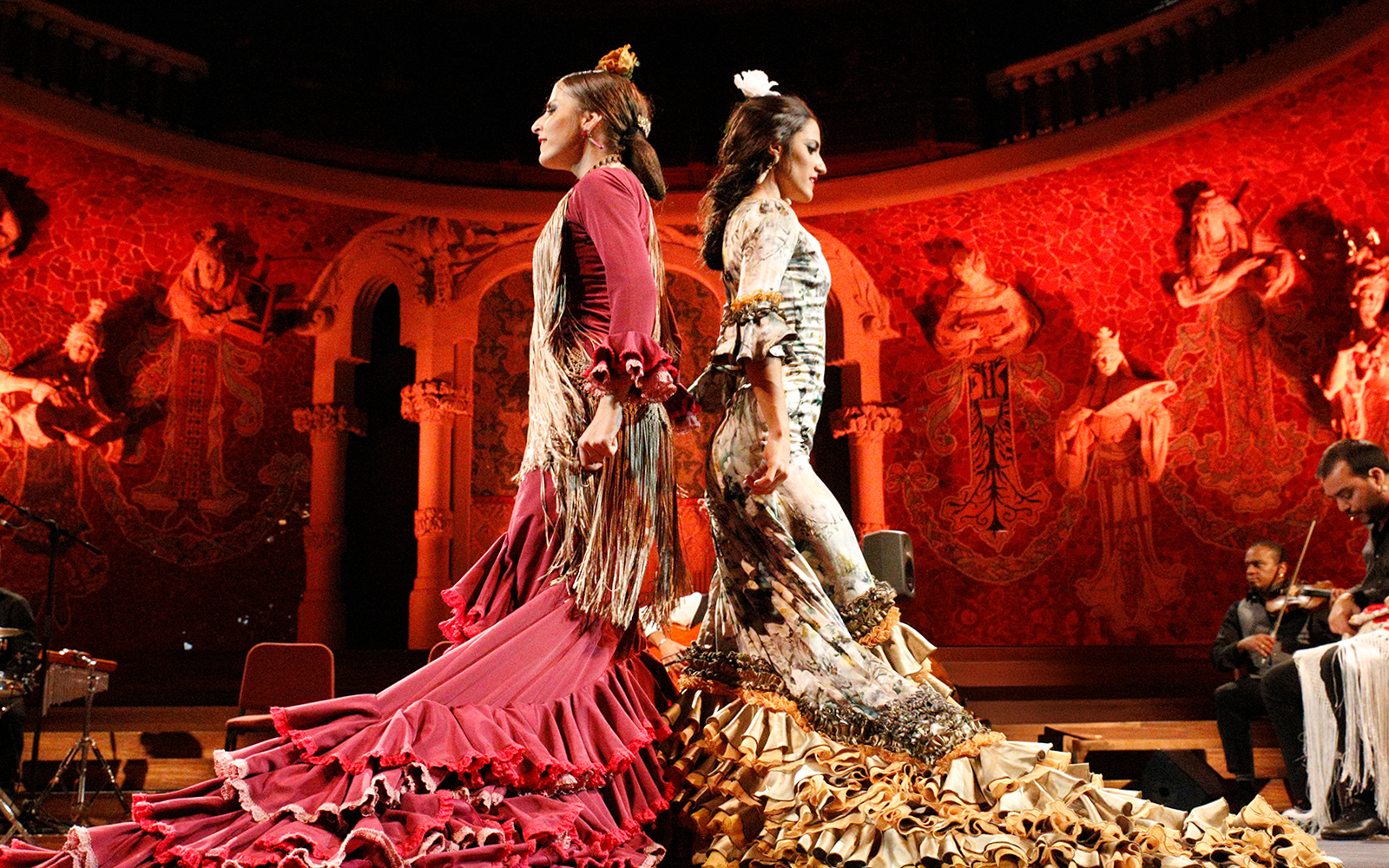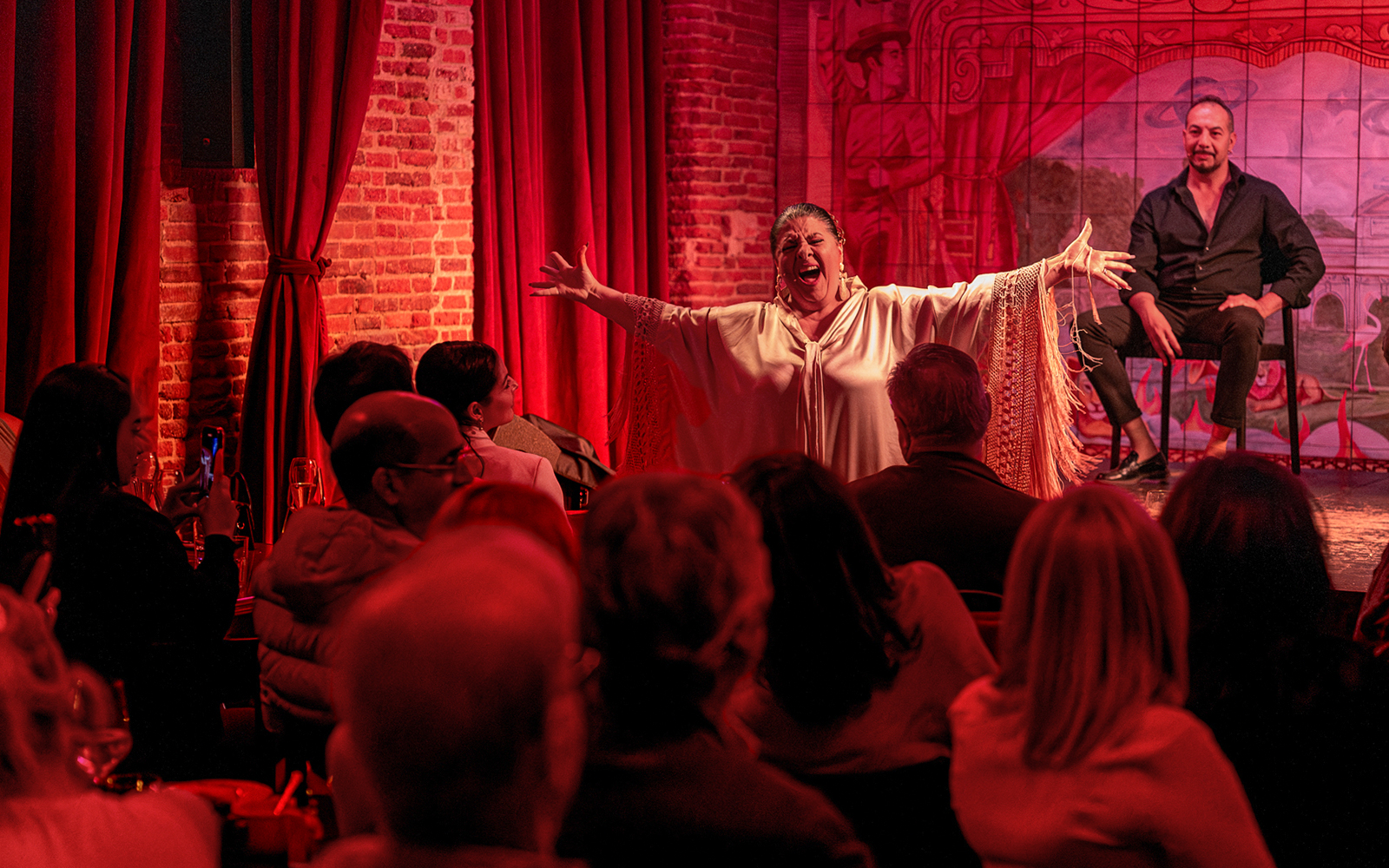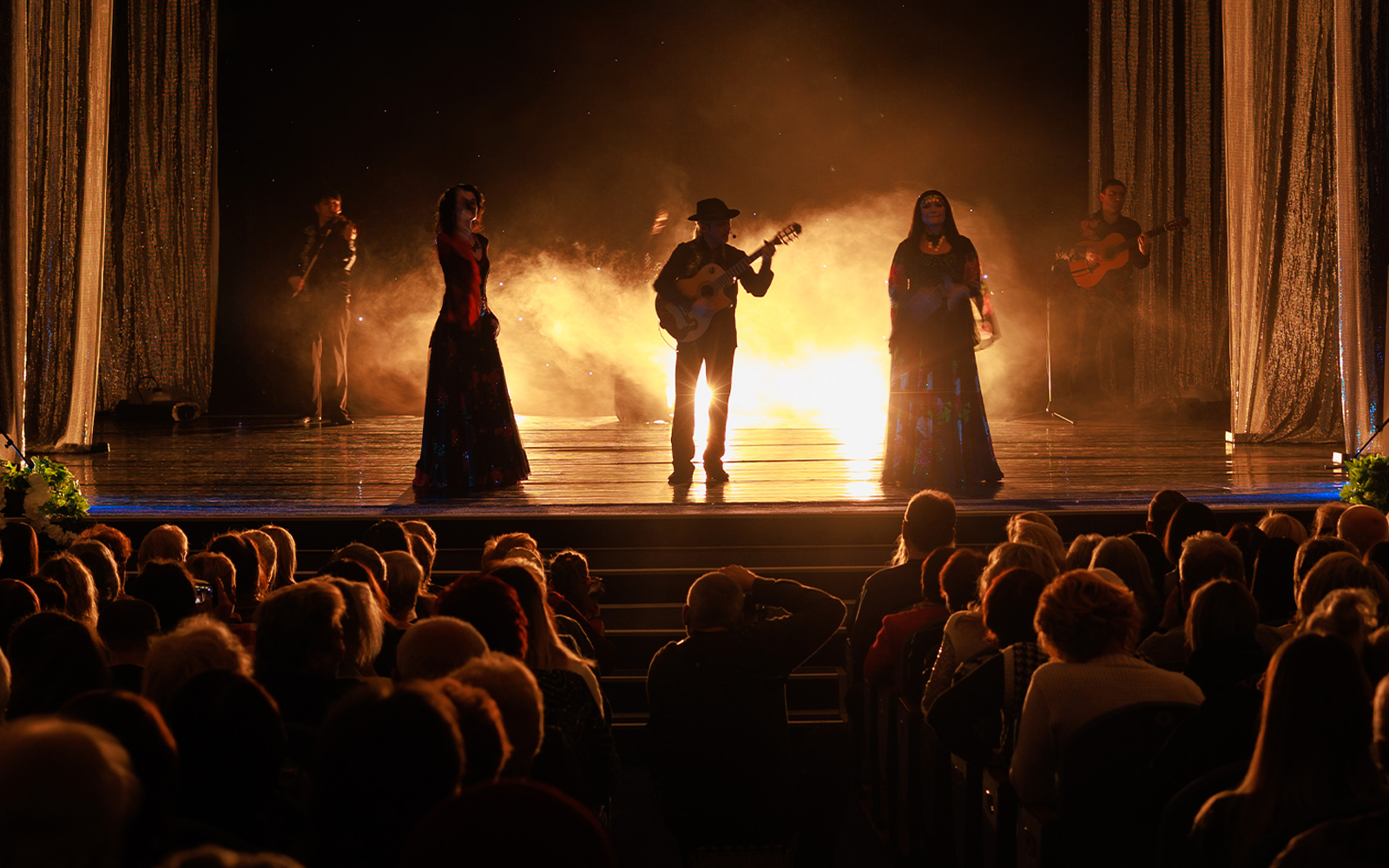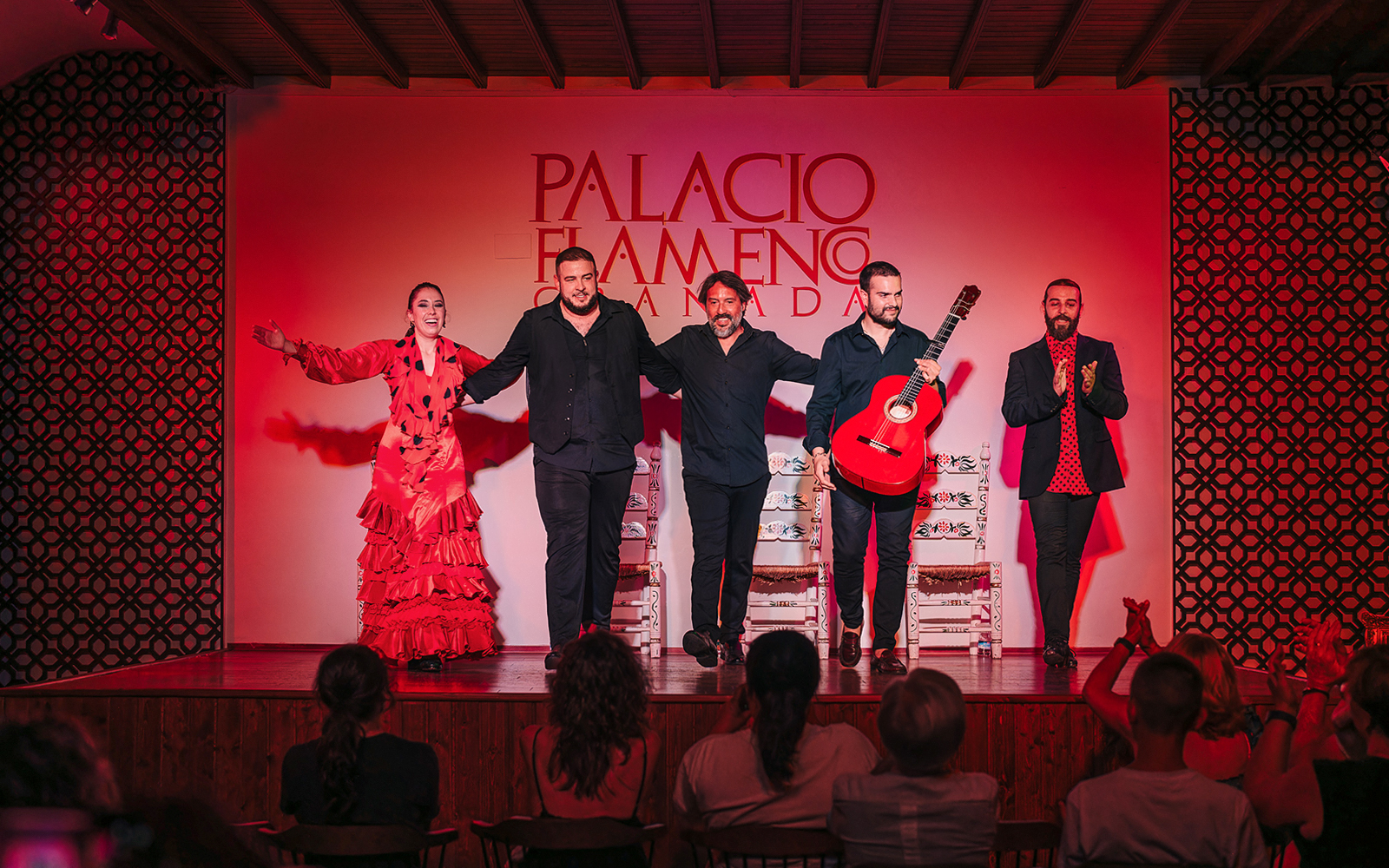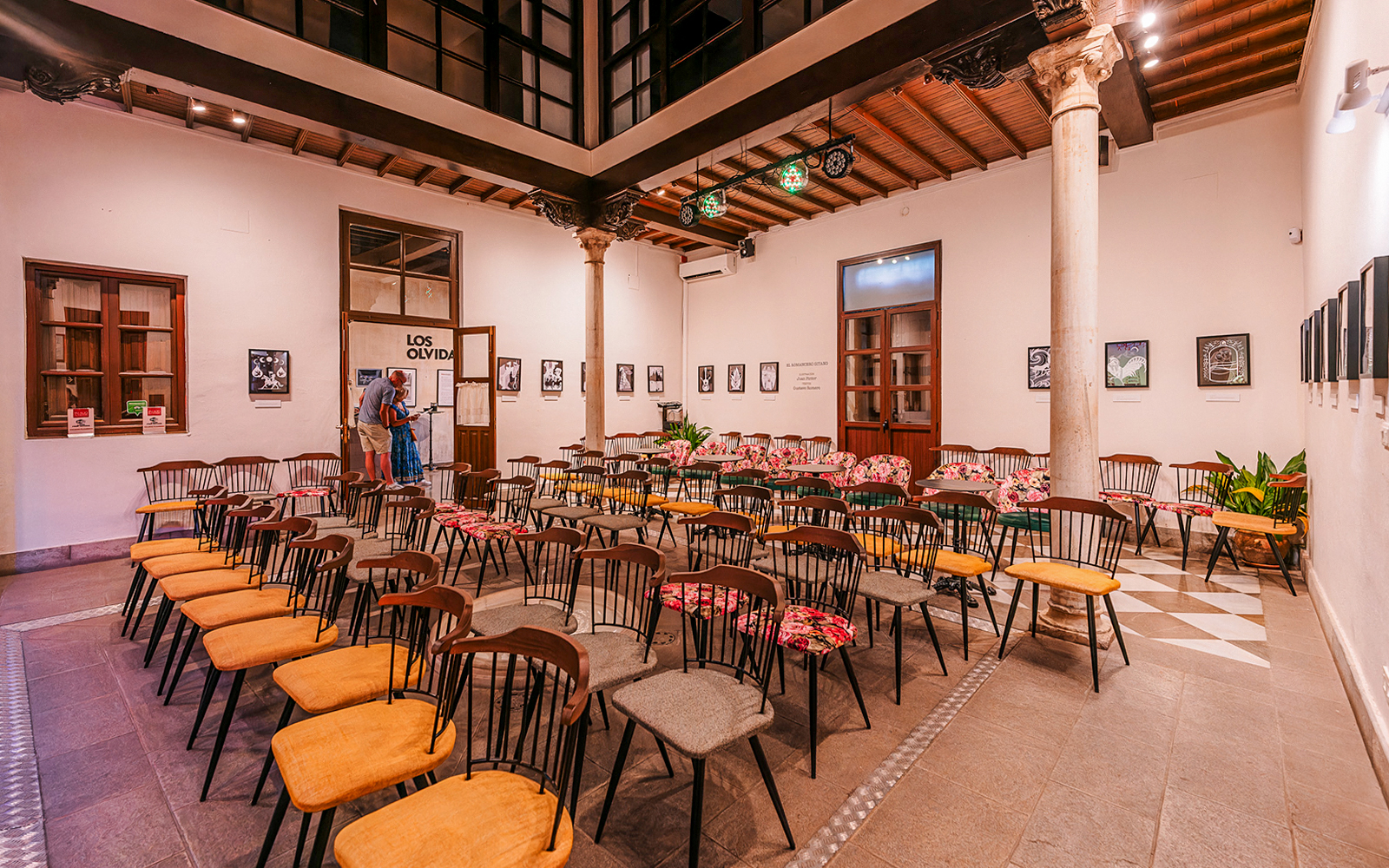
Tickets
Language
Currency
Contents
A first-timer's guide to flamenco in Spain
Flamenco consists of three fundamental components:
Cante (Singing)
The emotional core of flamenco, where singers convey deep feelings through intense, often improvised vocals. Traditionally passed down through generations, the singing tells stories of love, loss, and longing.
Baile (Dance)
Going a step beyond choreographed movement, flamenco dance helps the performers physically manifest emotion. Dancers use their entire body to express the music's mood, combining traditional Andalusian folk dance, Gitano influences, and classical Spanish dance.
Toque (Guitar Playing)
- The guitar provides the rhythmic foundation for the performance. Guitarists rely on intuition and improvisation, creating a unique sound through complex rhythms and intricate fingerwork.
You can explore flamenco shows in Spain and discover which is the experience best suited for you. Some of our favorite picks are -
0
